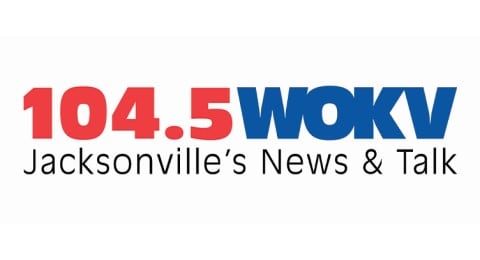It’s one of the most challenging storms they’ve ever forecast.
That's the admittance from the National Hurricane Center that came months ago, during a public hearing session by the Coast Guard Marine Board of Investigation probing the sinking of El Faro in Hurricane Joaquin. The NHC representative noted how the storm behaved more erratically than most forecasters anticipated.
FULL STORY: El Faro sinking
The NTSB has also been investigating the sinking, and has now made public hundreds of pages of factual information they've gathered, including an in depth examination of the meteorological factors involved. WOKV has worked through this Meteorology Group Chairman's Factual Report to bring you the new information and context.
Hurricane Joaquin
The tropical depression that would eventually become powerful Category 4 Hurricane Joaquin first formed the night of September 27th, 360 nautical miles northeast of San Salvador Island, Bahamas. Twenty-four hours later, around the time when El Faro left Jacksonville, the system was a tropical storm, and continued to intensify.
The storm was publicly classified as a hurricane 7:39AM September 30th. At 10:49PM it was a Category 3, officially a "Major Hurricane". It would eventually reach strong Category 4 intensity.
Forecasting problems
A Tropical Cyclone Report issued by the NHC after the storm fully analyzes all available data to give a history of the storm and overview of the environment.
During the Coast Guard MBI, the NHC admitted forecasting errors with this storm were larger than usual, calling it one of the most challenging systems they had encountered for forecasting. The TCR confirms that, saying that between 72 and 120 hours ahead of the storm, the track errors were more than double the mean official errors for the previous five-year period. The report notes errors were also higher than the mean from 24 hours out, but lower than the mean at 12 hours out. When examining the reason for these errors, the TCR says "Joaquin was not a particularly well-behaved storm in terms of its track". Most of the models expected the storm to move west or northwest when it became a tropical cyclone, when in fact the storm moved southwest.
In terms of intensity, the TCR finds forecast intensity errors were also greater than the mean official errors for the previous five-year period, but those errors were greater at all forecast times.
The NHC did hedge their confidence in the forecast in real time, however. Because of the forecast uncertainties, the TCR says the NHC sent "key messages" in its Tropical Cyclone Discussions between September 30th and October 2nd, highlighting their lack of confidence in both the track and intensity forecasts. Those key messages additionally focused on both direct and indirect effects of the storm on the Bahamas and eastern US.
Forecast communications
The NHC works with international government meteorological service partners as needed, according to the NTSB report. This includes calls to advise foreign parties about pending NHC forecasts, and NHC including watches or warnings issued by another government in any relevant advisory the NHC puts out. Adding advisories from another meteorological partner, however, depends on communication from that foreign party.
For this storm specifically, the government of the Bahamas issued various tropical storm and hurricane watches and warnings. The NHC says it was not familiar with, or aware of, any text or graphics the Bahamian government distributed for Joaquin.
There are a number of different advisories and discussions issued by NHC, including a high seas forecast, offshore water forecast, and marine weather discussion, in addition to the forecast on the storm track and intensity itself.
Forecast distribution
There are a number of ways El Faro was able to receive text and graphic weather information. In fact, the Coast Guard has requirements for ships like El Faro to be able to monitor weather while at sea, including that certain channels transmitting weather data and safety communications must be monitored.
Inmarsat-C SafetyNET is an automated satellite system for weather, marine, and safety warnings. The NTSB report says there is no user fee to receive SafetyNET broadcasts, and El Faro was equipped to receive information through this system. The NTSB report says weather information relating to El Faro’s location were broadcast through this platform, including “urgent” high seas forecasts, which would have also triggered an audible and visible alarm.
GlobeWeather is another platform that was used on El Faro, providing three-day weather forecast synopsis files including surface pressure, wind speed, fronts, wave heights, and more. The NTSB report says El Faro did not request the GlobeWeather data during the sinking voyage, however TOTE says the data was automatically downloaded.
The Coast Guard VOBRA broadcast covers weather information for the Bahamas region. Records show the High Seas Forecast on the evenings of September 30th and October 1st were not broadcast. There are also several time slots September 29th and 30th and October 1st that the VOBRA broadcast did not include the Tropical Cyclone Forecast/Advisory, and the NHC VOBRA text may not have broadcast 11:30AM September 30th.
El Faro also could have requested weather data through a system called NWS FTPmail, which gives users the ability to request data from NWS through email, even if there is no open internet connection. The request must be emailed in a very specific and customized format, but the information is returned in “generally less than an hour”, according to the NTSB report. There is no record of El Faro using this system on the final voyage.
The Coast Guard also sometimes decides to send aircraft up to broadcast information, and on the day before the sinking, the report says an aircraft was up and broadcasting over the Florida Straits and Bahamas, including suggesting any underway vessels seek shelter. While some vessels responded to the aircraft or asked them for further information, the crew did not receive any direct communication from El Faro.
Bon Voyage System
While there were many ways El Faro received weather information, former crewmen have testified that the Bon Voyage System was the main resource for the Captain.
The MBI has already heard at length about BVS. This program is geared toward weather impact on routing, providing maps and graphics that reflect weather and ocean data and putting that with other factors like fuel and time- if requested- to optimize a route. The information is delivered by broadband or email. The NTSB report says El Faro opted to receive data via email, although the broadband option is more frequently updated and capable of handling larger data packets.
Because of a one-time glitch, Applied Weather Technology- who is behind BVS- says one of El Faro's data packages the day before the sinking was based on a duplicated storm track. Testimony to the MBI previously showed because of the time to gather the meteorological information, process the data packages, and distribute it, this means that, at one time the day before the sinking, El Faro was working with information that was 21 hours old. The NTSB report says AWT has now been able to identify what happened and make adjustments so it's verified that updated forecasts are being used.
New heavily redacted supplemental information from the NTSB report indicates the timeline for processing each data package may actually contain some information that’s older than was previously testified to. Specifically, it was previously testified that BVS issues a data packet that’s based on NHC forecasting from six hours prior, because of the time it takes to process the information. The new report shows the data package also factors in a GFS model run from nine hours prior. AWT believes these timelines to be within industry standards.
GALLERY: Exhibits from NTSB factual reports
While the NTSB report focuses on the errors in forecasting from NHC, it also shows how that translates in to what was sent to El Faro through BVS. The information package they received 33 hours ahead of the main storm impact projected Hurricane Joaquin 111 nautical miles and 45 knots off where it would ultimately be 8AM October 1st. Even just three hours ahead of the storm, the BVS weather file information was 25 nautical miles and five knots off, because of the error in the track forecasting.
AWT is unclear how many computers on El Faro had BVS installed and where they were located, but TOTE says there was one in the Captain’s office and one on the bridge. The company provides shore assisted routing services for vessels, but El Faro did not subscribe to that. The vessel also did not opt to receive additional tropical updates through BVS.
The MBI also heard extensive testimony questioning how, exactly, the information from BVS was distributed on the ship. The NTSB report says there was only one email address the information was sent to. Testimony indicates that email belonged to the Captain, who would then forward the information to the bridge, although it remains unclear how the crew received the information if the Captain wasn’t by a computer.
Weather gauging tools
Various testimony to the MBI has already spoken to the fact that El Faro's anemometer, which measures wind speed, may not have been accurately working and was not generally relied on. The transcript from the VDR confirms in the crew's own words that they did not trust the device. This NTSB report further says it's unknown how representative the recordings from the anemometer are compared to actual wind conditions.
TOTE says El Faro's crew would use the device for relative wind magnitude and direction, and the crew would then compute true wind, according to the report. The NTSB says NWS metadata shows about 99% of reporting vessels used the anemometer, rather than visual estimations.
The NTSB information does, however, have reports from five ships that measure winds of 34 knots or greater within 400 miles of Joaquin leading up to the sinking. We also know from testimony of the Captain of El Faro's sister ship, El Yunque, that they picked up a 100 knot relative wind gust while traveling the reverse route from San Juan to Jacksonville during the storm.
Surface wind magnitude retrievals showed the sinking happened within Joaquin’s radius for maximum wind, with readings of more than 90 knots.
El Yunque's Captain and El Faro's Captain emailed about routing for the storm, conditions they were seeing, and more, and El Yunque's Captain says he believed El Faro had a good plan in place.
At the broader level, one of the tools used during aircraft reconnaissance missions of hurricanes is a Wide Swath Radar Altimeter, which gathers information on ocean direction and significant wave height. The NTSB report says that, and other instruments on NOAA's two P3 aircraft, couldn't be used because both aircraft were grounded for maintenance during the storm. Aircraft with the Air Force Reserve 53rd Weather Reconnaissance Squadron and NOAA's Aircraft Operations Center did do other data collection missions, including observations, dropsdone observations, and surface wind magnitude retrievals.
The NWS doesn’t calibrate tools, but keeps track of company reports. There is no record of when El Faro’s analog aneroid barometer was last calibrated, even though it had an adjustment in March 2015. The NTSB estimates the last calibration in a lab would have been April 2011. The digital type barograph on board was calibrated in January 2014 and adjusted October 2014, according to records.
Looking forward
WOKV has combed through all of the new reports this week, bringing you details from the Engineering Group, Electronic Data Group, and Survival Factors Group. Check back tomorrow for details on what happens next with the ongoing investigations.










